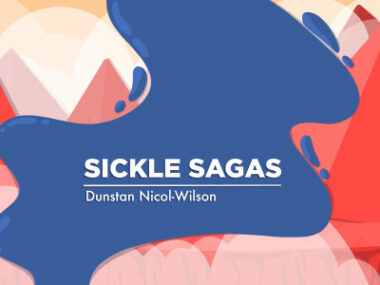Celebrating a milestone in gene therapy for sickle cell disease
I'm encouraged by news that the first U.S. patient has completed treatment
Written by |

I recently wrote about my disappointment regarding Pfizer’s decision to withdraw Oxbryta (voxelotor) from global markets as a treatment option for sickle cell disease. Therefore, it seems only fitting that I also celebrate a milestone in gene therapy.
Kendric Cromer recently became the first sickle cell patient to complete treatment with gene therapy after it was approved in the U.S. last December, The New York Times reported. This is fantastic news for Cromer, who was 12 when he completed the therapy in October, as well as for his family and sickle cell patients worldwide.
Seeing a photo of Cromer leaving the hospital in a wheelchair and wearing gear from the anime series “Naruto” reminded me of my own childhood with sickle cell disease. At the time, little was known about the condition, and I faced many isolated battles. I, too, have been pushed through a hospital ward in a wheelchair, though it was because my symptoms were so debilitating. In contrast, this image of Cromer offers hope for life without sickle cell.
Cromer isn’t just leaving behind the physical confines of a medical facility; he is stepping into a new chapter of life, hopefully free from the constant cycle of pain crises he experienced throughout his childhood. It’s like he’s gotten a second chance at life, which offers hope to patients waiting for similar curative treatments.
We must keep raising awareness about gene therapy for sickle cell
For years, gene therapy was being investigated as a potential sickle cell treatment, though many in our community felt the promise of a cure was too good to be true. Many other possible breakthroughs have fallen short, so we’ve grown accustomed to disappointment.
The extensive research, funding, and other resources required for gene therapy to be approved and for a patient to complete treatment can’t be understated. It also takes extreme courage and patience to be the first at anything in medicine. I commend Cromer and his family for taking this leap. Hopefully a long line of cured patients will follow.
However, it’s also important to note that gene therapy is complex, expensive, and not without risks. The process requires a person to undergo chemotherapy to clear their bone marrow in preparation for an infusion of their treated stem cells. According to the Times, Cromer spent 44 days in the hospital, during which he experienced severe pain and multiple side effects.
In addition, it will take time for gene therapy to become widely available. There are significant hurdles to ensuring equitable access, such as the cost, the availability of facilities that can perform the therapy, and insurance coverage.
So, as we celebrate this monumental achievement, we must also remember to continue our advocacy efforts. The goal isn’t to cure a few, but to cure all. We must push for further research to optimize gene therapy, reduce costs, minimize risks, and expand access. Advocacy is necessary to raise awareness about gene therapy and urge policymakers to prioritize funding for sickle cell treatment and research.
As a community, we must also ensure that sickle cell patients and their families have accurate, accessible information about gene therapy. Many may be understandably hesitant to embrace a new and complex treatment, especially given past medical injustices experienced by Black and marginalized communities. Transparency, education, and trust-building will ensure everyone can make informed decisions about their healthcare.
This news is a reason to celebrate, but it should also serve as a call to action. The battle against sickle cell disease is far from over. Still, in a battle that sometimes feels pointless, there is a win we can hold on to: a glimpse at a possible future without sickle cell disease.
Note: Sickle Cell Disease News is strictly a news and information website about the disease. It does not provide medical advice, diagnosis, or treatment. This content is not intended to be a substitute for professional medical advice, diagnosis, or treatment. Always seek the advice of your physician or other qualified health provider with any questions you may have regarding a medical condition. Never disregard professional medical advice or delay in seeking it because of something you have read on this website. The opinions expressed in this column are not those of Sickle Cell Disease News or its parent company, Bionews, and are intended to spark discussion about issues pertaining to sickle cell disease.







Leave a comment
Fill in the required fields to post. Your email address will not be published.